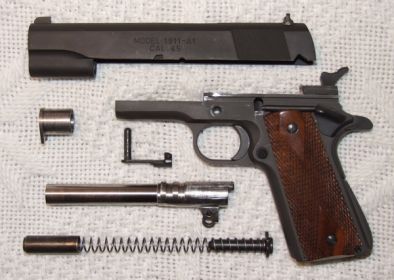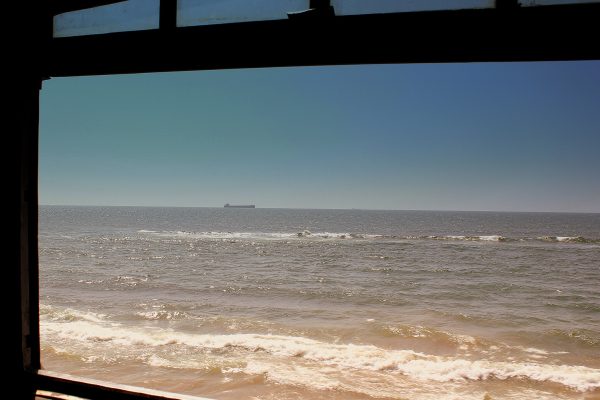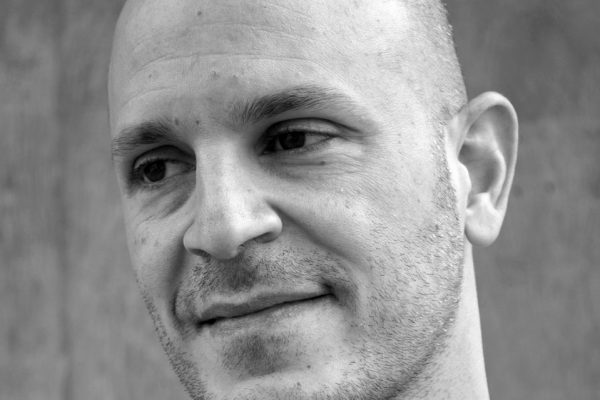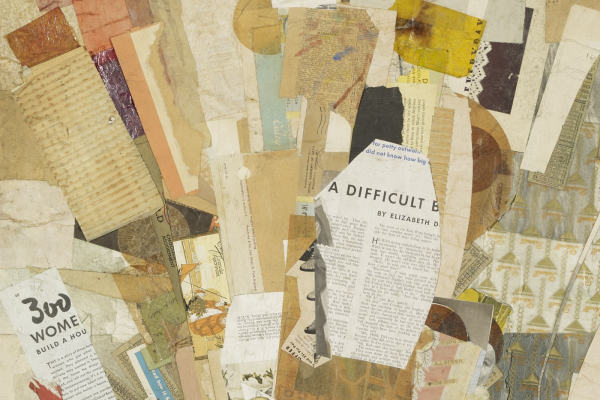The technical challenge of translating Ouyang Jianghe’s poetry is nowhere clearer than in the poem “Handgun,” which appears three times in the collection Doubled Shadows (2012), translated by Austin Woerner. The poem appears in two separate free versions subtitled “after Ouyang Jianghe,” and once in an appendix that gives a more literal, annotated translation. The poem requires all this effort because it runs on chaizifa, the separation of words into their component characters, a practice once used for divination and fortune-telling. The most concrete example is the poem’s central object, a word that, in Chinese as in English, comprises the character for “hand” and the character for “gun": 手枪.
The poem separates the compound “handgun” for the same divinatory purposes that motivated ancient chaizifa: to understand the object, one reads its component parts. But the poem does not stop after a single layer of division and reinterpretation. Lines four and five, translated literally, read: “if the gun becomes long it turns into a Party / if the hand is inked black it turns into another Party.” But in Chinese, “long gun party” refers to Falange, the Spanish Fascists of the 1930s, and “black hand party” is the name for the mafia and other organized crime. This maneuver, in which the Chinese characters from “handgun” are recombined to form the names of two different violent organizations, is obviously untranslatable—it is hard to explain even in a paragraph of English prose.
As one of Woerner’s other translations of “Handgun” says, “the world divides in infinite fissions”: after chaizifa, there is no practical way to put the words—or the worlds—back together again. This process, both decompositional (something broken into pieces) and compositional (because those pieces then tell a new story), is not simply something an artist or a writer does, but a fundamental process of nature—an erosion, an entropy. The emotions we hide inside nesting dolls of words are exposed as the words crumble away.
The American debate over gun regulation sometimes reminds me of “Handgun.” I think about how virtual and abstract the gun of the poem becomes, how much a concept in language—the luxury, maybe, of a Chinese citizen who has never confronted the breadth of a U.S. citizen’s private gun collection or encountered a man with a high-powered rifle while taking a nature hike. (Ouyang is well traveled in and out of the United States, so this may not be the case for him: his newest poetry is about a monumental statue that hangs in the Cathedral of St. John the Divine in New York.) If I wrote a poem about firearms, it would be scared, or angry, or snide; it would be hard to look past my experiences with guns and at them as a phenomenon, as an artifact of language as well as a tangible weapon.
Ouyang’s more distant perspective can help us understand why the gun debate is as vexed as it is, one side attempting to atomize weaponry into constituent categories—acceptable, regulated, unacceptable—and the other to unify all manner of weapons, occasions, and motives under the Second Amendment term “arms.” This impasse explains why gun advocates have spilled so much ink arguing that the AR-15 Bushmaster is like all other rifles, rather than a particular kind of anti-personnel or assault rifle: if it cannot be separated from other guns, it will be that much harder to regulate. To delineate the parts of a category is to seize a certain kind of power over it.
Ouyang’s poem, though, reminds us that when we talk about guns, we are always talking about people, as well as names and things: a word used in a particular way represents a community that shares a definition for it. If the word divides, so does the community; divide the community, and its newly separate members will divide the words themselves (Woerner’s version: “you can take apart a faction / into further partitions / parties / ambitions / you can break it into act, or action”). For those interested in encouraging sane gun control, enforceable background checks, or gun traceability, the question then stops being entirely about the relationship between people and their guns, and starts being about the relationship between people and people. We know that gun owners are most likely to be married white southerners, that they are disproportionately Republicans, and that the top reason cited for gun ownership is personal safety. One hallmark of this particular community is its cohesion—not simply self-similarity in action or ideology, but the feeling that one’s cohort is intimate and trustworthy, and that threats come mainly from others. The first assumption of a gated community is that it is safe inside the gate and dangerous outside.
The assumption of a stable interior, united—and armed—against a dangerous exterior, is one of a set of assumptions about guns and gun ownership that has to change. As we struggle to end the racialization of crime and criminality underwritten by inhumane, unjustly enforced laws, we must dismantle the glib assertion that non-white communities and cultures are especially responsible for crime. But we should transform our assumptions about the safe white interior as well. New data available from the CDC reiterates that a substantial portion of the danger of guns comes not from insider-outsider interactions, but from intracommunity violence: suicides, accidents, and domestic violence far outweigh homicides from mass killings or other types of crime. The Twitter hashtag #crimingwhilewhite was created so that white people who had been excused for crimes could point out the police and justice system’s double standard; what it does not often give us is a sense of the violence and intimacy of white crime. When a person, white or black, dies by violence in the United States, it is disproportionately likely to be at the hands of an acquaintance, partner or spouse, and they are most likely carrying a handgun.
Near the climax of “Handgun,” a statue of “eternal Venus stands / her hands rejecting humanity / from her breasts she pulls / a pair of drawers — / two bullets a gun. . . .” Violence here is not uniformly caused by hate: Venus is a killer too. Married to the god of war, consort to the god of the forge, she provoked the Trojan war. The preparation for violence that self-defense gun ownership represents is also not driven by loathing alone. It is driven in part by love, by the sense that one is eager to protect one’s inner circle and that one’s inner circle is more trustworthy and valuable than others.’ Both of these assumptions are false, and we know from Freud as well as our own experience that the death drive, congenitally conjoined to our passions, stalks everyone’s house by night. Our instinctive love of that which is near or similar to us must be questioned—especially when it is extended to the neighborhood, the suburb, the racial group. The sharp and directed fear of others is an act of denial and superiority; to point a terrified finger at the dangers of other communities is to remain ominously silent about your own pettiness, imperfection, and rage.
Chaizifa, the decomposition of words into characters, characters into elements, parties into people, does not stop when it reaches the boundary of the body. Venus’s gun is inside her, as are her ammunition and anger: just as we should not automatically assume that our neighbors and friends are appropriate and safe possessors of deadly weapons, we should also not assume the same thing about ourselves. Many of us have heard of the terrible shooting of a firearms instructor at a Nevada shooting range, but in the last three months at least three firearms instructors have shot others or themselves. These are people entrusted with teaching other gun owners how to safely operate their weapons. No amount of training, obviously, can make people other than human; the arrogant rejection of that humanity is something best left to the gods and goddesses, or at least to figures made of stone.
When we disassemble our neighborhoods, our families, and ourselves, we see that there is a part of us that resists the use of deadly force, and a part of us that chases after it. We see the American ardor for the gun as emblematic of this contorted, deeply human fascination with death. The best defense against these internal threats is not to own a gun, but to not own a gun. And when we talk about threats to American safety, we should always first list ourselves: the vicious hand that holds the weapon. Woerner translates Ouyang in this way: “one eye you aim / at love; the other you ram / into the barrel of a gun . . . you take your hand- / gun, shoot into the west— / in the east, a man falls.”








